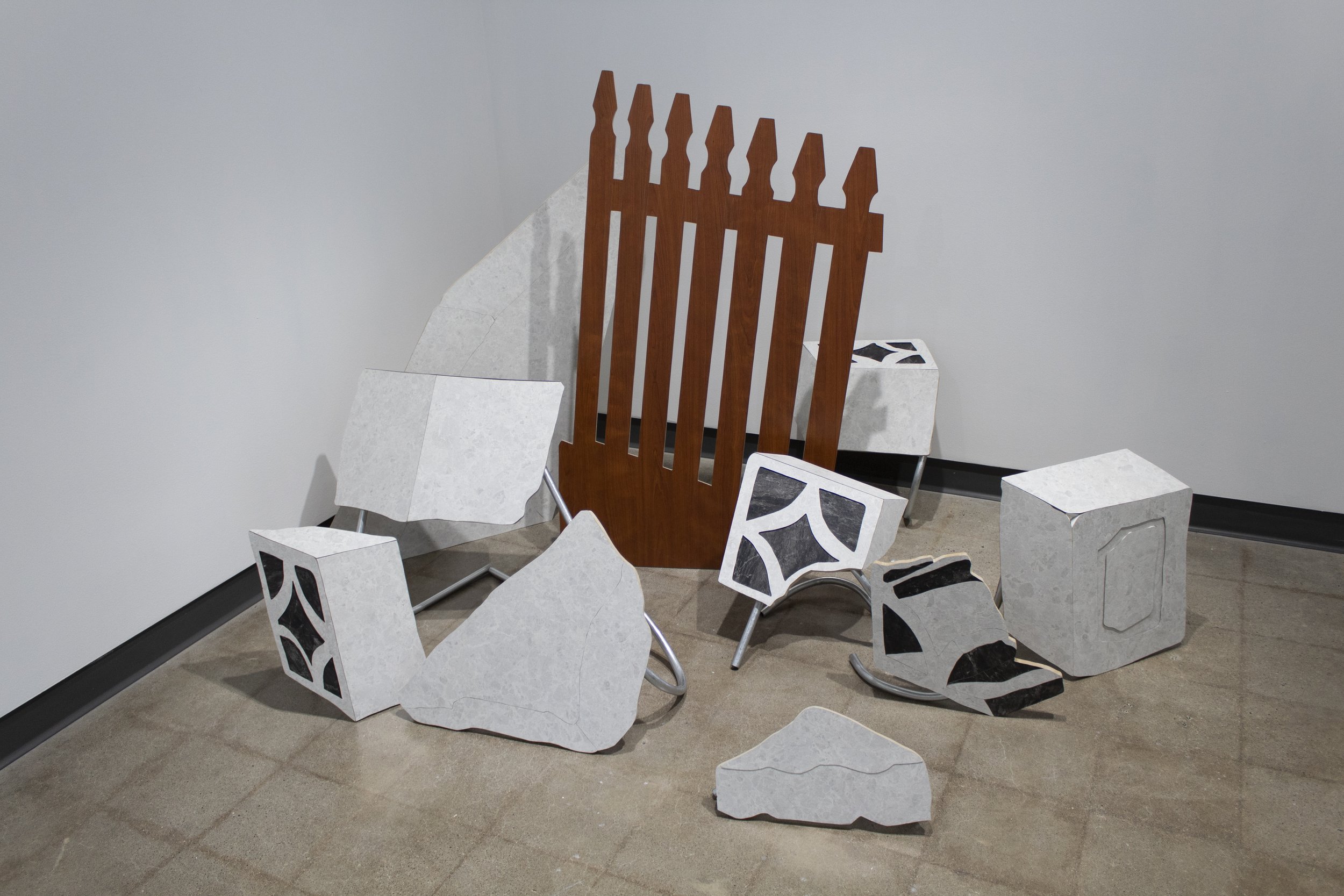
Nonsuch
Nonsuch
2022
SNAP Gallery

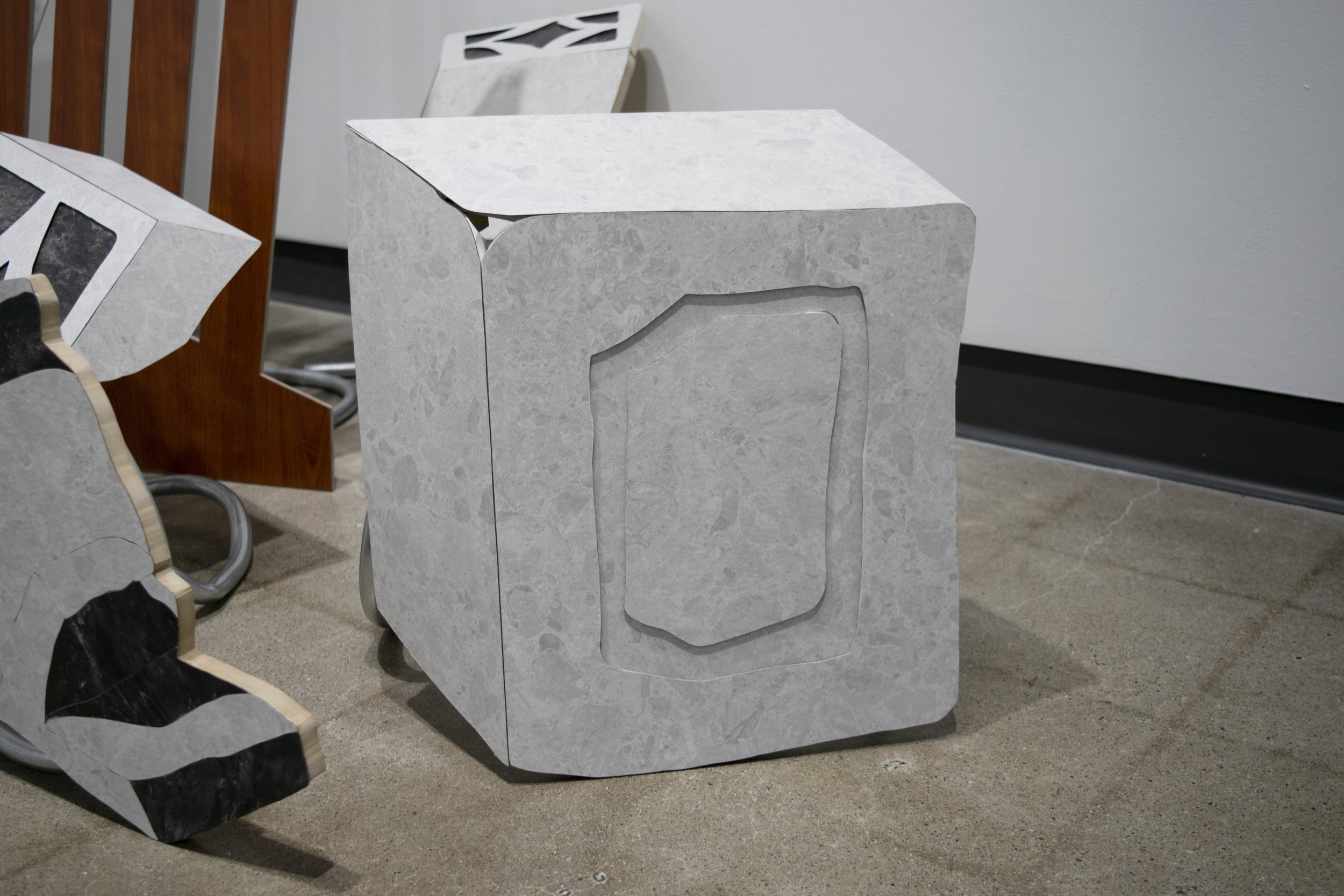
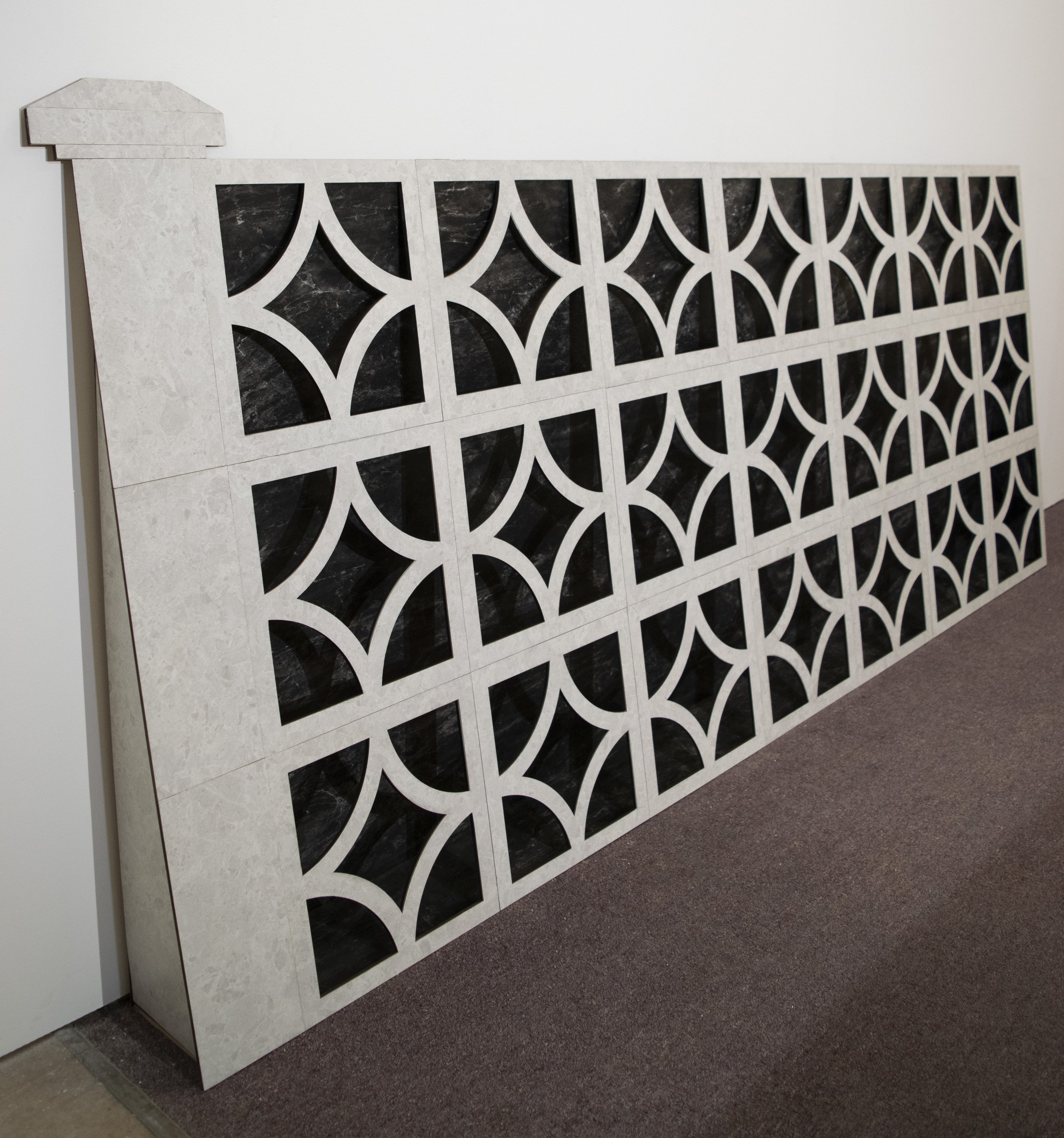
Intact
Formica, MDF
2022
70” x 32” x 12”
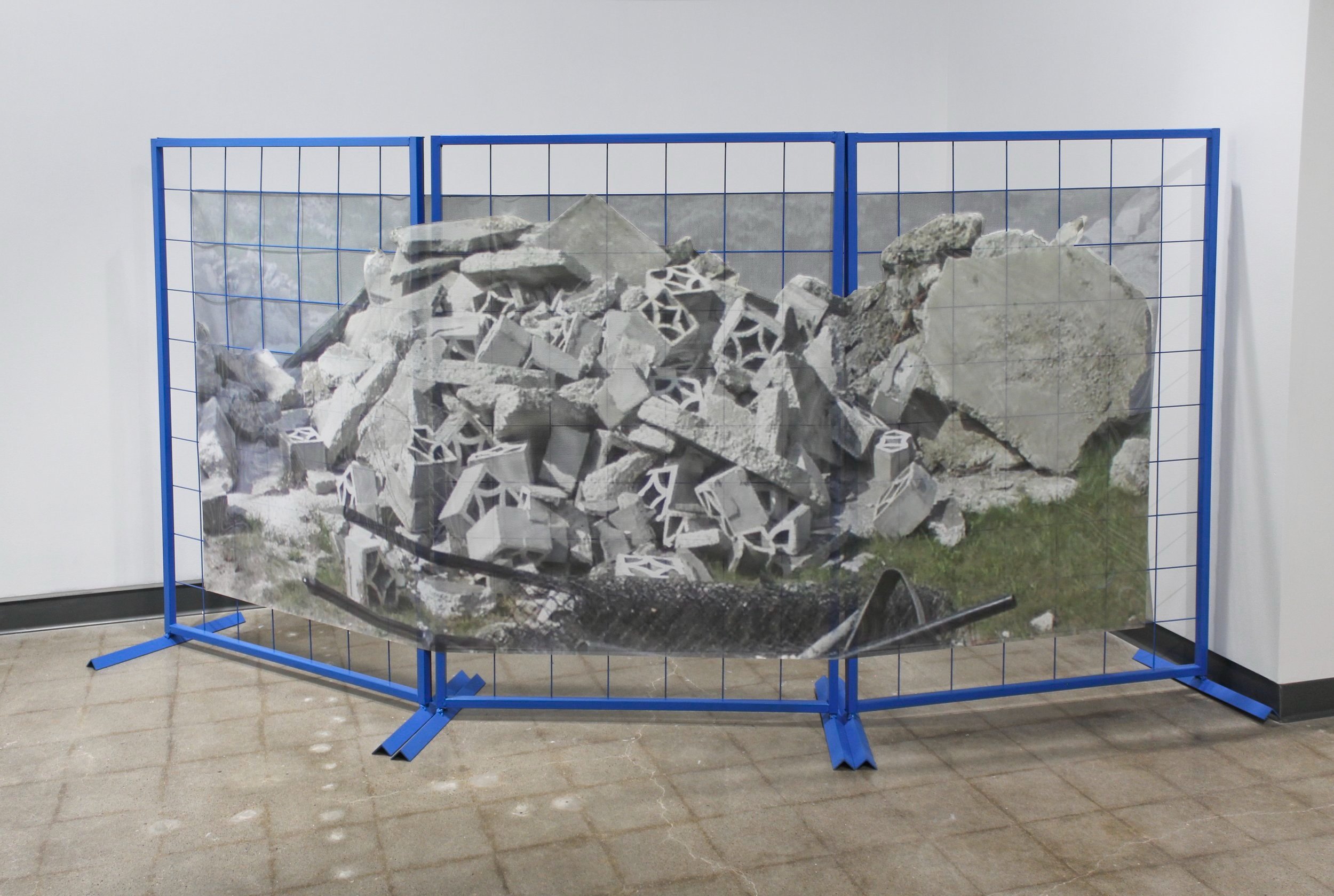
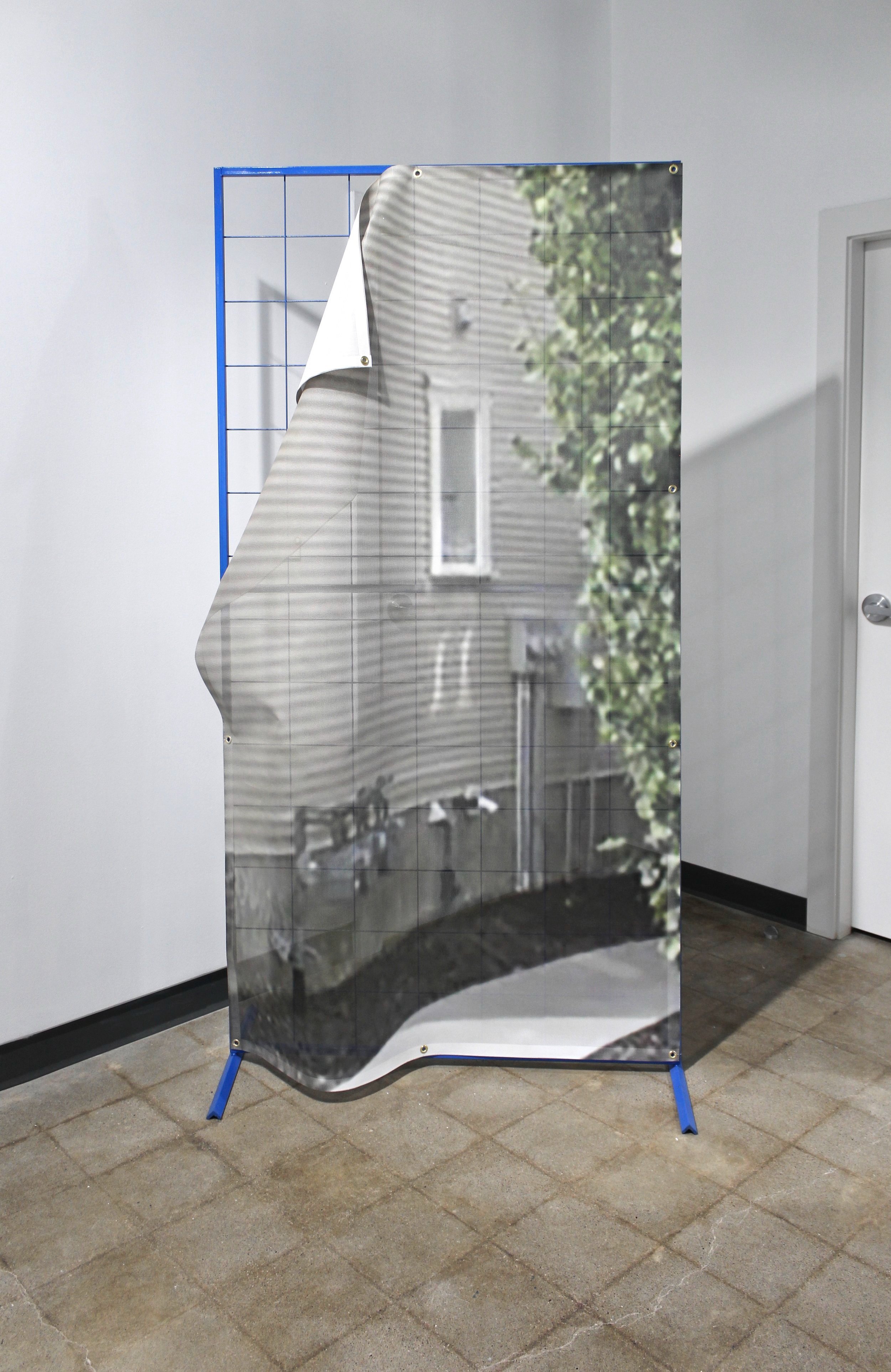
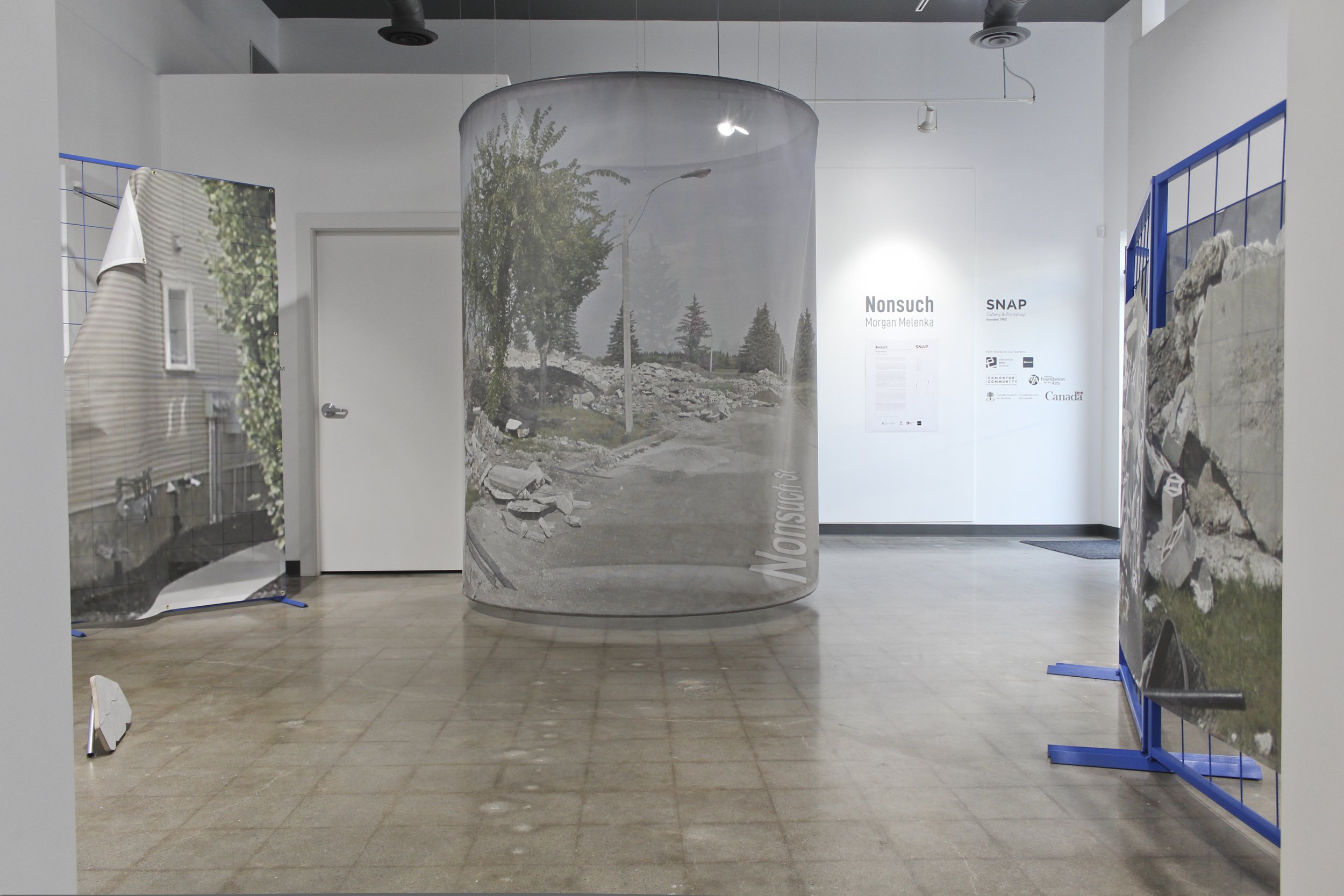
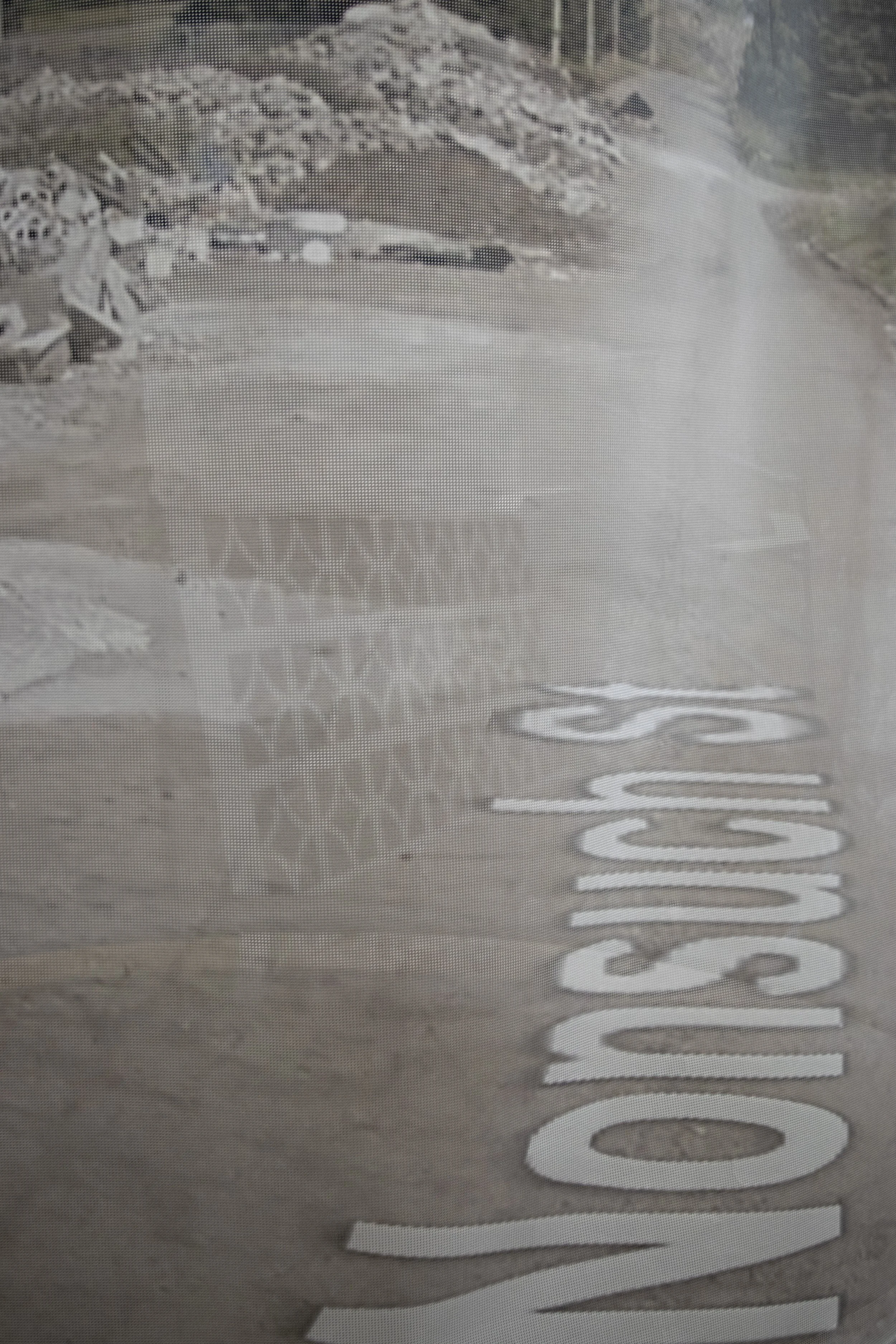
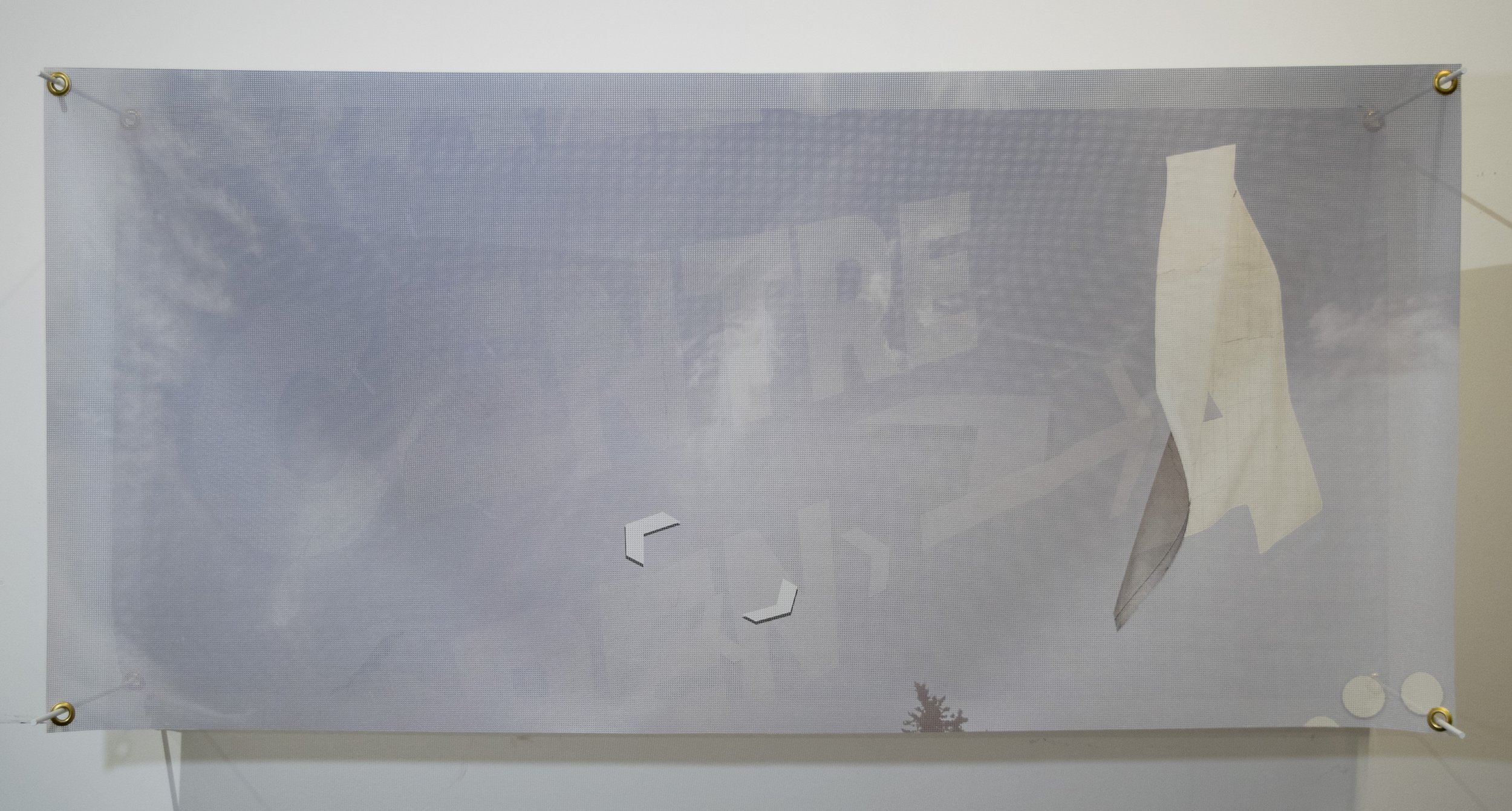
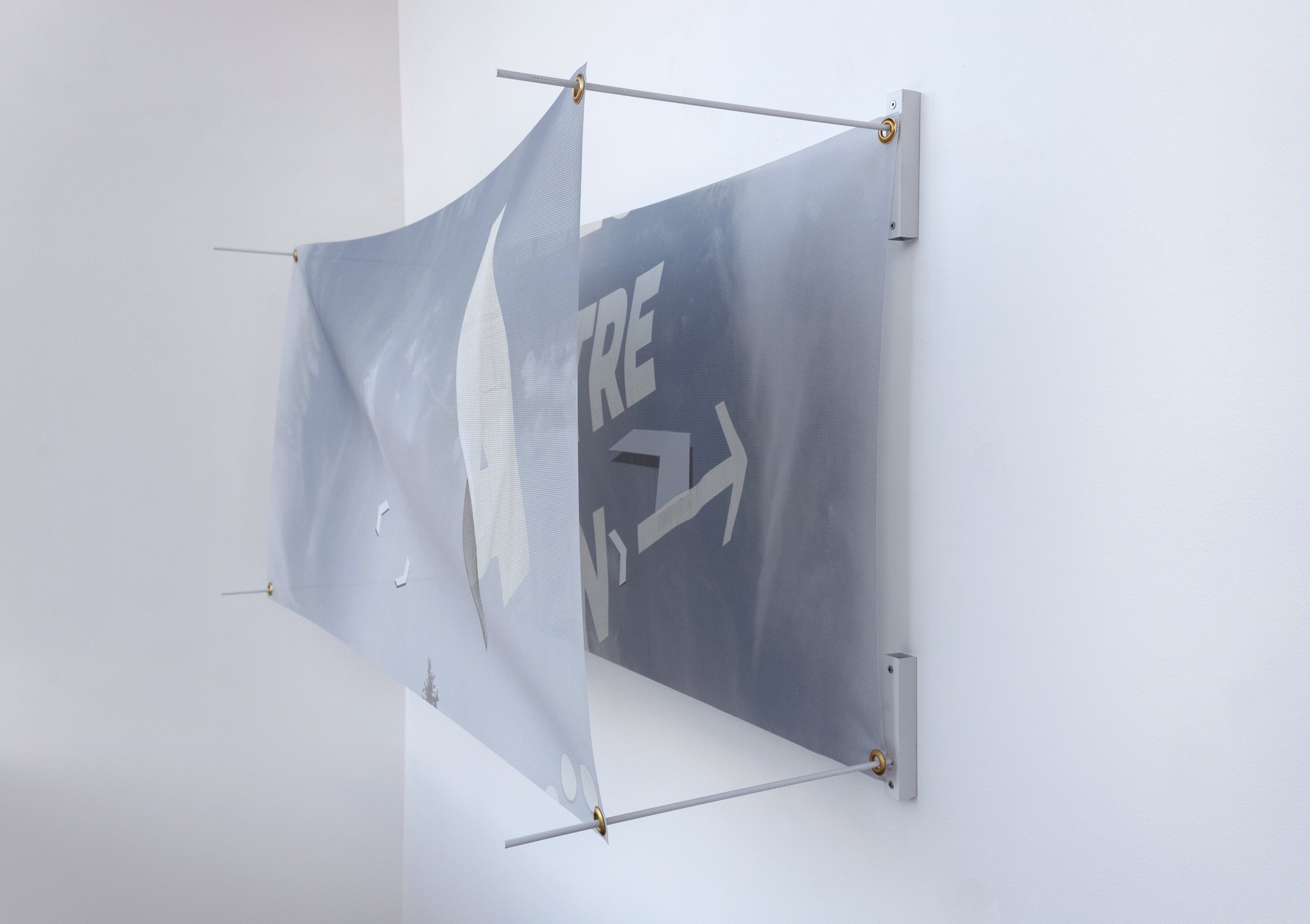









In 2015 I worked as a weed-puller for the City of Edmonton and the map of parks and boulevards led me to strange pockets of the city. One such pocket was located on Nonsuch street in Griesbach, with neatly piled ruins and orderly remaining upright street lights. This street – with its destroyed military housing awaiting replacement – is the basis of this exhibition.
The new Griesbach development enforces architectural guidelines where houses must adhere to five historical building styles representing a vague Anglo history: Victorian, Tudor, Colonial, Craftsman and Prairie. In an effort to maintain the “historic” flavor of the military base CFB Griesbach, planners landed on representing an Edmonton that never existed. Compounding the oddity of young ruins replaced with new old buildings was that name which seemed to sum it all up: Nonsuch.
Nonsuch was a British palace, a variety of naval ships, and Edmonton’s own naval reserve. It was the name of the ship on which the first Hudson’s Bay Company trading expedition occurred in 1650. The word’s definition is “unparalleled”, but the weight of representing the beginning of the fur trade and with it British imperialism is heavy. To me this word operates as a Trojan horse, appearing as a negation of itself – “nothing”, but containing a depth of four centuries. That Edmonton has a falsely historic neighborhood glamorizing an imperialistic and colonizing past is not surprising – this is a city concerned with fantasy spaces such as West Edmonton Mall where visitors can re-enact safe and falsified versions of history. The name also accidentally recalls Marc Augé’s concept of “non-place”, a term he uses to describe an alienation from place in the modern world: “Certain places exist only through the words that evoke them, and in this sense they are non-places, or rather, imaginary place: banal utopias, clichés. …Here the word does not create a gap between everyday functionality and lost myth: it creates the image, produces the myth and at the same stroke makes it work…”1. These spaces are defined by advertising, anonymity of users and loss of sense of continuity.
A material indicator of new architecture is the presence of construction fences and advertising on mesh banners. Employing the role large-scale advertising plays in the fabrication of non-places, the exhibition blurs the line between print / sculpture and fine art printmaking / commercial production. Images of Nonsuch street sit on this translucent material, where conflicting images interlace and form one confusing mass, pointing to this messy creation of new ruins into old buildings. A breezeblock garden fence made from Formica (a countertop material which imitates stone and wood), another “printed matter” from the world of architecture, creates the illusion of grandeur and substance, which is then deconstructed into a pile of rubble imitating Nonsuch street. Taken together the work is a meditation on the character of Edmonton as exemplified in this street in ruin, and more generally North America’s relationship to place, history and fantasy.
1 Augé, Marc. Non-places: An introduction to Supermodernity (London: Verso, 1995) 77
Photographs courtesy of Luke Johnson
This project was possible through support of the Canada Council for the Arts.
